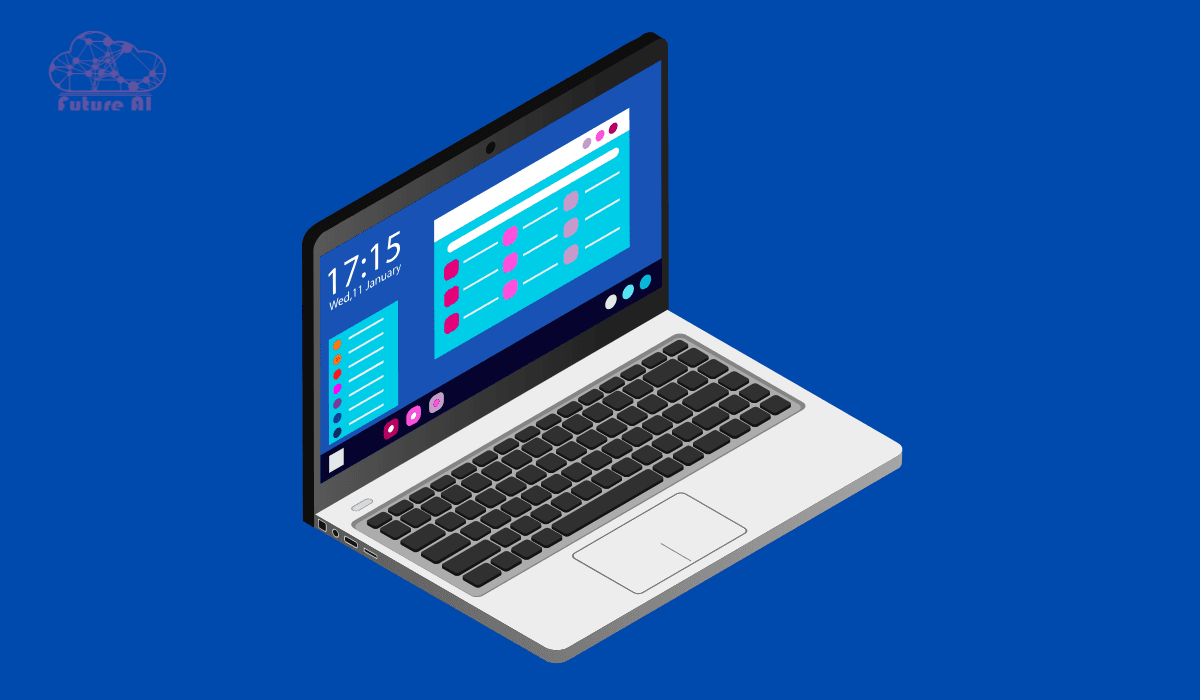Is your PC running hotter than usual? Let’s find out.
If you’ve ever heard your fans roaring for no reason or noticed your system slowing down during routine tasks, your CPU might be overheating. Monitoring your CPU temperature is essential for anyone who wants their computer to run smoothly and last longer.
Excess heat can silently throttle performance, cause unexpected crashes, or even reduce your CPU’s lifespan over time. Whether you’re a casual user, a gamer pushing your rig to the limit, or a professional running heavy workload, keeping an eye on your CPU temperature is one of the easiest ways to prevent long term damage.
How to check CPU Temperature
In this guide, we’ll walk you through exactly how to see your CPU temperature step by step on Windows, macOS, and Linux. No complicated tech jargon. Just clear, practical advice anyone can follow.

Let’s dive in and make sure your system is staying cool when it counts.
Why Checking CPU Temperature Matters
Your CPU is the heart of your computer and like any hardworking component, it generates heat. But when that heat gets out of control, problems start stacking up. That’s why regularly checking your CPU temperature isn’t just a geeky habit. It’s a smart, preventative step anyone can take.
Checked Your CPU Temp? Now Make Sure It’s Safe.
Knowing your CPU temperature is just the first step. Learn what’s normal and what’s too hot for your system.
Avoiding Overheating and Performance Loss
When your CPU gets too hot, it will automatically throttle its performance to protect itself. This means slower speeds, lag during tasks, and even system freezes. In more serious cases, your PC might shut down unexpectedly to prevent permanent damage.
By monitoring your CPU temperature, you can catch issues early and take action before they affect your productivity or lead to expensive hardware repairs.
Identifying Cooling Inefficiencies Early
High temps often point to problems with your cooling setup. Dust buildup in vents, dried out thermal paste, or a malfunctioning fan can silently raise your temperatures over time. Regularly checking your CPU temperature helps you spot these inefficiencies early, allowing for simple maintenance instead of major repairs.
Gaming, Streaming, and Productivity Concerns
If you’re into gaming, video editing, 3D modeling, or streaming, your CPU is constantly under heavy load. In these scenarios, temperature spikes are common but if they’re too frequent or extreme, you risk thermal throttling or crashing mid project.
Keeping tabs on your CPU temps ensures smooth performance during intense sessions, so you can focus on winning, creating, or multitasking without worrying about system stability.
Idle but Overheating? Don’t Ignore a 92°C CPU.
If your laptop runs hot even when you’re not using it, it could signal a deeper issue. Here’s what to do if your CPU is overheating at idle.
How to See CPU Temperature on Windows
Whether you’re troubleshooting overheating or just being proactive about system health, Windows users have several easy ways to check CPU temperature. Let’s break them down.

Using BIOS/UEFI (Before Windows Loads)
If you want to check your CPU temperature without third-party software, the BIOS or UEFI interface is your go-to. It’s a bit more “barebones,” but reliable.
Here’s how to do it:
- Restart your computer.
- As it boots, press the BIOS key (usually Del, F2, Esc, or F10 , your screen may show which one).
- Navigate to the “Hardware Monitor”, “CPU Status”, or “PC Health” tab.
- You’ll see your current CPU temperature listed, usually in °C.
Note: BIOS readings are static and don’t reflect real world usage temperatures since the CPU is idle in BIOS.
Using Core Temp, HWMonitor, or Open Hardware Monitor
For real time monitoring inside Windows, lightweight third-party tools are the best solution. Here are three excellent (and free) options:
Core Temp
- What it does: Displays core-by-core temperatures in real time.
- Pros: Simple UI, very lightweight, accurate readings.
- Cons: Includes bundled software during installation, uncheck extras.
Download Core Temp
HWMonitor
- What it does: Tracks temperature, voltage, fan speeds, and more.
- Pros: Detailed and reliable; shows all system temps.
- Cons: Slightly cluttered for beginners.
Download HWMonitor
Open Hardware Monitor
- What it does: Similar to HWMonitor, but open source.
- Pros: Free, customizable, no installation required.
- Cons: Interface can be overwhelming.
Download Open Hardware Monitor
Quick Comparison Table
| Tool | Real-Time Temps | Custom Alerts | Fan Speed Monitor | Beginner Friendly |
| Core Temp | ✅ | ✅ | ❌ | ✅ |
| HWMonitor | ✅ | ❌ | ✅ | ⚠️ Medium |
| Open Hardware Monitor | ✅ | ✅ | ✅ | ⚠️ Medium |
Windows Task Manager – What You Can’t See
Windows Task Manager is great for monitoring CPU usage, but it doesn’t show temperatures.
- You can press Ctrl + Shift + Esc and go to the Performance tab to see:
- CPU utilization
- Core/thread count
- Base speed
- But for temperature data, you’ll need one of the third-party tools mentioned above.
How to See CPU Temperature on macOS
While macOS doesn’t offer built-in CPU temperature monitoring like BIOS or some Windows tools, it’s still easy to check using a couple of trusted third-party apps. Here’s how Mac users can stay on top of their system temps.

Using Macs Fan Control or iStat Menus
Macs Fan Control
This app not only shows your CPU temperature in real-time, but also lets you manually control fan speeds that handy for cooling tweaks.
Steps to use it:
- Download it from https://crystalidea.com/macs-fan-control
- Install and launch the app.
- Under the “Sensors” section, you’ll see:
- CPU Core Temps
- GPU and SSD temps (on supported models)
- Optionally, switch to the “Custom” fan mode if you want to override Apple’s automatic fan curve.
Tip: Avoid setting fans too low, cooling is essential for Mac longevity, especially under load.
iStat Menus
Arguably the most feature rich macOS monitoring tool. iStat Menus tracks CPU temperature, usage, memory, network traffic, and more, right from your menu bar.
Steps to use it:
- Download from https://bjango.com/mac/istatmenus/
- After installing, enable the Sensors module.
- You’ll now see live CPU temperature data in your menu bar, including:
- Core-by-core readings
- Thermal sensor data
- Fan speed readouts
iStat Menus is a paid app, but it comes with a free trial, great if you just want to run a short diagnostic.
How to See CPU Temperature on Linux
Linux gives you powerful tools to monitor your CPU temperature but you might need to get your hands a little “dirty” in the terminal first. Don’t worry it’s easier than it sounds, and GUI options are available too.

Using lm-sensors (Terminal)
lm-sensors is a command line tool that detects hardware sensors and displays CPU temperature data. Here’s how to set it up:
Step-by-Step Setup:
- Install lm-sensors
Open your terminal and run:
bash
sudo apt install lm-sensors- Detect sensors
After installation, run:
bash
sudo sensors-detectFollow the prompts (you can hit Enter to accept defaults).
- Check CPU temperature
Now, view the temperature using:
bash
sensorsYou’ll see output like:
yaml
coretemp-isa-0000
Adapter: ISA adapter
Core 0: +42.0°C
Core 1: +43.0°CThis is a lightweight and reliable way to get detailed thermal data without extra software.
Using Psensor (GUI Option)
If you prefer visuals over the command line, Psensor offers a clean, graphical interface to monitor CPU temperatures.
Steps to Install Psensor:
- First, install lm-sensors and Psensor:
bash
sudo apt install lm-sensors psensor- Run the sensor detection again (if you haven’t already):
bash
sudo sensors-detect- Launch Psensor from your application menu or by typing:
bash
psensorWhat You’ll See:
- A real-time graph of CPU temperature
- Individual core temperatures
- Option to show tray notifications or set up alerts
Psensor is perfect for users who want background monitoring without living in the terminal.
Recommended CPU Temperature Monitoring Tools
Whether you’re a casual user keeping an eye on system health or a power user chasing thermal headroom, here are the top tools for checking CPU temperature across all major platforms.
For Windows Users
1. Core Temp
- Lightweight tool showing real-time temperatures of each CPU core.
- Minimal interface, low resource usage, supports logging.
- Download: https://www.alcpu.com/CoreTemp/
Best for users who want simple, accurate temperature readings without extra fluff.
2. HWMonitor
- Displays voltage, fan speeds, power draw, and CPU/GPU temps.
- Offers an advanced overview of all thermal sensors on your motherboard.
- Download: https://www.cpuid.com/softwares/hwmonitor.html
Ideal for troubleshooting thermal issues or power delivery problems.
3. Open Hardware Monitor
- Free, open source alternative to HWMonitor.
- Tracks CPU, GPU, and hard drive temps; works on many chipsets.
- Download: https://openhardwaremonitor.org/
A great pick for privacy conscious users who want control and transparency.
For macOS Users
1. iStat Menus
- Shows CPU temperature, usage, and system resource stats in the menu bar.
- Beautiful UI, incredibly detailed, supports customizable alerts.
- Download: https://bjango.com/mac/istatmenus/
Recommended for Mac power users who need elegant, real-time performance tracking.
For Linux Users
1. lm-sensors
- What It Does: CLI tool that reads temperature sensors via terminal.
- Why It’s Great: Lightweight, scriptable, ideal for server admins and developers.
- Install Command:
bash
sudo apt install lm-sensors2. Psensor
- GUI-based tool that visualizes temperature and fan data.
- Great for users who prefer visual monitoring without terminal commands.
- Install Command:
bash
sudo apt install psensorQuick Comparison Table
| Tool Name | Platform | Interface | Real-Time Graphs | Fan/Voltage Data | Best For |
| Core Temp | Windows | GUI | ❌ | ❌ | Lightweight monitoring |
| HWMonitor | Windows | GUI | ❌ | ✅ | Full system monitoring |
| Open Hardware Monitor | Windows | GUI | ✅ | ✅ | Open-source transparency |
| iStat Menus | macOS | GUI | ✅ | ✅ | Power users on macOS |
| lm-sensors | Linux | CLI | ❌ | ✅ | Terminal-focused users |
| Psensor | Linux | GUI | ✅ | ✅ | Visual Linux monitoring |
Each of these tools has its strengths. For quick checks, Core Temp or Psensor might be all you need. If you’re managing high performance systems or gaming rigs, tools like HWMonitor or iStat Menus offer deeper insights.
What Is a Normal CPU Temperature?
Keeping an eye on your CPU temps is essential for anyone who wants their system to last and perform smoothly. But what is “normal” when it comes to CPU temperature?
Let’s break it down based on activity and CPU type.
Idle vs. Load Temperatures
Your CPU doesn’t run at a constant speed or temperature. It scales based on what you’re doing. Here’s what you should expect:
| CPU Type | Idle Temp (°C) | Typical Load Temp (°C) | Gaming Temp (°C) | Max Safe Temp (°C) |
| Intel (Desktop) | 30–45°C | 65–80°C | 70–85°C | ~100°C |
| Intel (Laptop) | 35–50°C | 70–90°C | 85–95°C | ~100°C |
| AMD Ryzen (Desktop) | 35–50°C | 65–85°C | 70–90°C | ~95°C |
| AMD Ryzen (Laptop) | 40–55°C | 75–95°C | 85–100°C | ~105°C |
| Apple Silicon (M1/M2) | 30–50°C | 60–80°C | 65–85°C | N/A (Passive-cooled) |
Note: Gaming temps can be slightly higher due to GPU heat bleed and prolonged usage.
Worried Your CPU Might Be Overheating?
Checking the temperature is just the start, knowing what’s too hot is what really matters. Learn the safe CPU temp ranges and how to cool it down if needed.
These ranges are general estimates. Always check your CPU’s exact specs for accurate thresholds (we’ve got you covered below).
Maximum Safe Operating Temperatures
Every CPU has a TjMax (Junction Temperature Maximum) defined by the manufacturer. This is the temperature at which the CPU begins thermal throttling to protect itself.
Intel Processors
- Most modern Intel CPUs have a TjMax of 100°C.
- Reference: Intel Ark
AMD Processors
- Ryzen CPUs typically cap out at 95°C to 105°C.
- Source: AMD CPU Documentation
Pro Tip: Aim to stay at least 10–15°C below max temps during full load for long term health and stability.
When to Worry?
Here’s a quick cheat sheet:
- 60–75°C under load: Totally fine.
- 75–85°C: Getting warm, but not dangerous.
- 85–95°C: Warning zone to optimize cooling.
- 95°C+ regularly: Troubleshoot immediately.
Seeing a CPU Over Temperature Error? Don’t Panic.
That warning means your system is in trouble but it’s fixable. Discover what causes it, how to fix it, and how to prevent it from happening again.
Common Issues & Troubleshooting
Even if your CPU seems fine on paper, unexpected temperature spikes can signal underlying issues. Whether your laptop is heating up at idle or a background app is going rogue, here’s how to spot and solve the most common problems.
High Idle Temps? What You Can Do
Idle temperatures above 50–60°C (especially when you’re not running anything intensive) are usually a red flag. Here’s why it might be happening and what to do:
- Background Tasks Running: Open Task Manager or Activity Monitor and look for high CPU usage during idle. Common culprits include antivirus scans, updates, or rogue browser tabs.
- Dust Buildup: If your fan is working harder than usual, it might be clogged. A quick cleanup can drop temps by 10°C or more.
- Old Thermal Paste: Over time, thermal paste dries out and loses its conductivity. If it’s been 2+ years, consider a reapplication.
Quick Fix: Shut down unused startup apps and perform a light internal cleaning with compressed air.
Apps Causing Unusual Heat
Some software even ones that seem harmless can spike CPU temps behind the scenes.
Common Offenders:
- Google Chrome with too many tabs
- Malware or crypto miners disguised as system files
- Game launchers (Steam, Epic, etc.) running in background
- Windows Update or telemetry services looping
What to Do:
- Use Task Manager (Windows) or htop (Linux) to monitor CPU %.
- Identify CPU usage over time using HWMonitor or Core Temp’s logging features.
- Uninstall or disable resource heavy apps if they’re not essential.
Expert Tip: Use a lightweight browser like Firefox or Brave and install an ad-blocker to reduce script-heavy pages.
Cooling Tips: Lower Temps Like a Pro
Managing heat is a full system strategy. Here’s how to dial in your cooling setup:
Adjust Fan Curves
- Use software like MSI Afterburner or BIOS/UEFI fan control settings to set more aggressive fan profiles.
- Target high RPMs above 70°C for better responsiveness.
Use a Cooling Pad (Laptops)
- An active cooling pad can lower temps by 5–10°C.
- Look for models with metal surfaces and adjustable height for best airflow.
Reapply Thermal Paste
- If your system is 2–3 years old, dried thermal paste could be holding back performance.
- Use a high-quality paste like Arctic MX-6 or Thermal Grizzly Kryonaut.
Optimize Airflow
- Keep intake and exhaust vents unobstructed.
- Use cable management to reduce clutter in desktop towers.
Bonus: BIOS Fan Control Settings
Many BIOS setups allow you to manually configure thermal response curves. Adjust thresholds so fans kick in sooner, especially for gaming or heavy workloads.
Insights from Tech Communities
Getting real world advice from active users and tech veterans is just as valuable as technical data. Here’s what communities like Reddit, Linus Tech Tips, and tech reviewers are saying about CPU temps and what they consider “normal.”
Reddit Users Weigh In
On subreddits like r/buildapc and r/techsupport, users frequently share their temperature readings and concerns. Here’s a quick snapshot:
“My Ryzen 5 5600X idles around 38–42°C, hits 75–80°C under gaming load. No issues.”
– u/siliconjay
“Laptop idle at 60°C but spikes to 95°C during Zoom calls. Turns out it was bloatware running in the background.”
– u/itsnotoverclocked
“Swapping from stock cooler to a Noctua NH-U12S dropped temps by 15°C. Worth every penny.”
– u/deltavcore
Many users agree that temps in the 35–45°C range when idle and 70–85°C under load are acceptable for modern CPUs. Anything above 90°C regularly? That’s cause for deeper investigation.
Linus Tech Tips Forum Highlights
Tech-savvy users on the LTT forums offer deeper hardware insights, often backed by benchmarks:
- “Laptop cooling systems are severely limited by design. If your CPU hits 92°C under load but doesn’t throttle, it’s working as intended, but not ideal.”
- “Delidding high end Intel CPUs can shave off 10–15°C, but only advanced users should attempt it.”
- “Don’t chase low idle temps too hard and focus on stability under stress and sustained workloads.”
Most experts suggest watching for thermal throttling rather than obsessing over raw numbers.
YouTube Reviewer Takes (Optional Embeds)
If you want to go beyond numbers, YouTube reviewers offer visual context:
- Gamers Nexus [Video Title: “CPU Thermal Testing Explained”] — breaks down how different coolers affect idle/load temps.
- JayzTwoCents [Video Title: “Is Your CPU Too Hot?”] — discusses airflow, paste, and fan curve tuning in real-world builds.
- Hardware Canucks — offers laptop thermal benchmarking comparisons between gaming brands.
Tip: Embedding these videos boosts time-on-page and user engagement.
Common Queries
How to Check CPU Temperature on Windows 10
You can check your CPU temperature on Windows 10 without entering the BIOS using third-party software. Here are some common methods:
- Using Core Temp
- Download and install Core Temp from the official site.
- Launch Core Temp; it will display real-time CPU temperature for each core.
- Core Temp shows temperatures in the system tray for easy monitoring.
- Using CPU-Z
- CPU-Z mainly shows CPU specs, but it does not display temperature.
- For temperature monitoring, you need software like Core Temp or HWMonitor.
- Using HWMonitor or HWInfo
- These are popular free utilities that monitor temperature, voltages, and fan speeds.
- Download, install, and run; CPU temperature will be displayed clearly.
- Using Task Manager or Windows Settings
- Windows built-in tools do not show CPU temperature. You must use third-party tools.
Using Windows 10? Here’s the Easiest Way to Check CPU Temps
Skip the guesswork, Windows users can monitor CPU temps quickly with these simple tools. Check out the easiest methods for Windows 10.
Is it Possible to See System Temperature Without Entering BIOS?
Yes! You do not need to enter BIOS to check CPU temperature:
- Use software like Core Temp, HWMonitor, HWInfo, or SpeedFan to view CPU temps in Windows.
- These programs can read sensors directly from the CPU and motherboard.
How to Check CPU Temperature on Windows 11
The process is very similar to Windows 10:
- Windows 11 does not have built-in temperature monitoring tools.
- Use third-party apps like Core Temp, HWMonitor, or HWInfo for accurate temperature reading.
- Download, install, and open these programs to monitor temps live.
How Do You Check CPU Temp on Reddit?
On Reddit, users typically recommend these tools and methods:
- Use Core Temp or HWMonitor for a simple and effective solution.
- Many users also suggest Open Hardware Monitor or NZXT CAM for comprehensive system monitoring.
- For gaming or performance users, MSI Afterburner (also works for CPU) is recommended.
- Search relevant subreddits like r/buildapc or r/techsupport for personalized advice.
CPU-Z
- CPU-Z is a free utility that shows detailed CPU specs, clock speeds, and cache info.
- It does not show CPU temperature but is very useful for hardware identification and performance info.
- Download link: https://www.cpuid.com/softwares/cpu-z.html
PC Temperature Check Online
- There is no reliable way to check your PC’s CPU temperature online through a website because temperature readings require direct sensor access.
- You must use locally installed software like Core Temp or HWMonitor to read hardware sensors.
- Online tools can only report browser or software info but cannot access hardware level temps.
Conclusion
Monitoring your CPU temperature is essential to ensure your system runs efficiently and to prevent overheating that can reduce hardware lifespan. By regularly checking your CPU temps, you can maintain optimal performance and avoid potential damage.
Try one of the recommended tools like Core Temp or HWMonitor today and keep your PC running cool and stable under pressure.